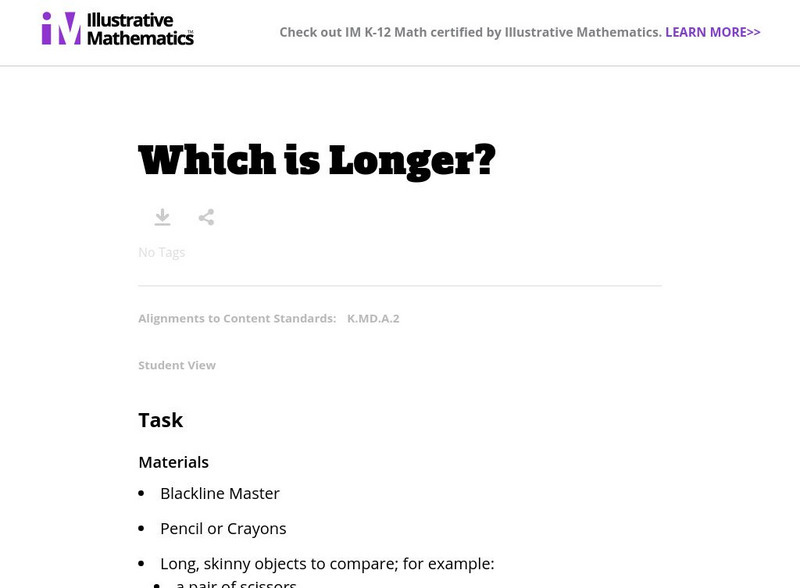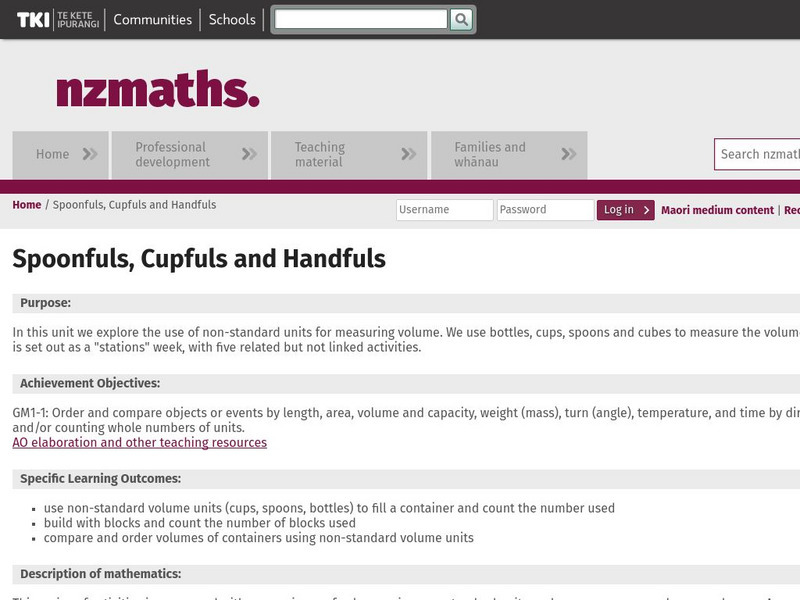Hi, what do you want to do?
Curated OER
Simple Circuits
Students investigate how series and parallel circuits work. In this physics lesson, students build their own simple circuits and compare their characteristics. They explain the importance of circuit breakers in household circuits.
Curated OER
Mapping It Out - Great Lessons For Geography
Through geography lesson plans students can learn about history, science, and a variety of other subjects.
Curated OER
Let's Get To the Core!
Students practice analyzing ice core samples to discover climate changes. Using the samples, they identify and graph the gas amounts. They use these numbers to determine their effect on global warming. In pairs, they complete a...
Alabama Learning Exchange
Alex: Hop on Pop and Non Standard Measurement
This instructional activity is a hands-on, cross-curricular instructional activity for exploring non-standard measurement. It utilizes children's literature, manipulatives, opportunities for writing, and small group collaborative...
Scholastic
Scholastic: Max's Math Adventures: Max's Measuring Mania
Read about how Max and Ruthie measured some fun objects in their gym. Use this method to measure things in your classroom. A helpful teacher's guide and extra challenges will make this a fun instructional activity on measuring with...
Science and Mathematics Initiative for Learning Enhancement (SMILE)
Smile: Lesson: An Introduction to Estimation and Measurements
Pancakes anyone? Students explore estimation and measurement by learning how to make pancakes. A hands-on lesson designed for students in grades 3-5 where students are engage in hand-on experiences involving measuring volume, converting...
Illustrative Mathematics
Illustrative Mathematics: 2.md Hand Span Measures
In this lesson plan students will measure their hand span to explore how to determine length.
Sophia Learning
Sophia: Standard Deviation
Students learn how to calculate the standard deviation by hand. Detailed examples that explore how to use the standard deviation formula are included.
Illustrative Mathematics
Illustrative Mathematics: Which Is Longer?
Students are introduced to the concept of length with this hands-on activity. Each student will choose two objects to compare by laying them next to each other and comparing which is longer. Students will record and discuss their findings.
Other
Nz Maths Measurement Lesson Plan: Spoonfuls, Cupfuls, and Handfuls
This New Zealand Measurement lesson plan offers an excellent opportunity for young students to explore, in a hands-on context, the concept of volume using non-standard units. There is also a Home Link available to send home for parents...
Alabama Learning Exchange
Alex: Souper Scooper
This hands-on, inquiry based lesson is an extension of the AMSTI Science Module, Solids and Liquids. Young scholars use nonstandard units to measure beans in a soup mix. Students predict how many beans will be in a scoop. Young scholars...
TED Talks
Ted: Ted Ed: Why the Metric System Matters
For the majority of recorded human history, units like the weight of a grain or the length of a hand weren't exact and varied from place to place. Now, consistent measurements are such an integral part of our daily lives that it's hard...
Illustrative Mathematics
Illustrative Mathematics: How Heavy
Students will have fun learning about weights with this hands-on activity. Students will use a balance scale to compare the weights of two different objects. Recording sheets are provided.

















